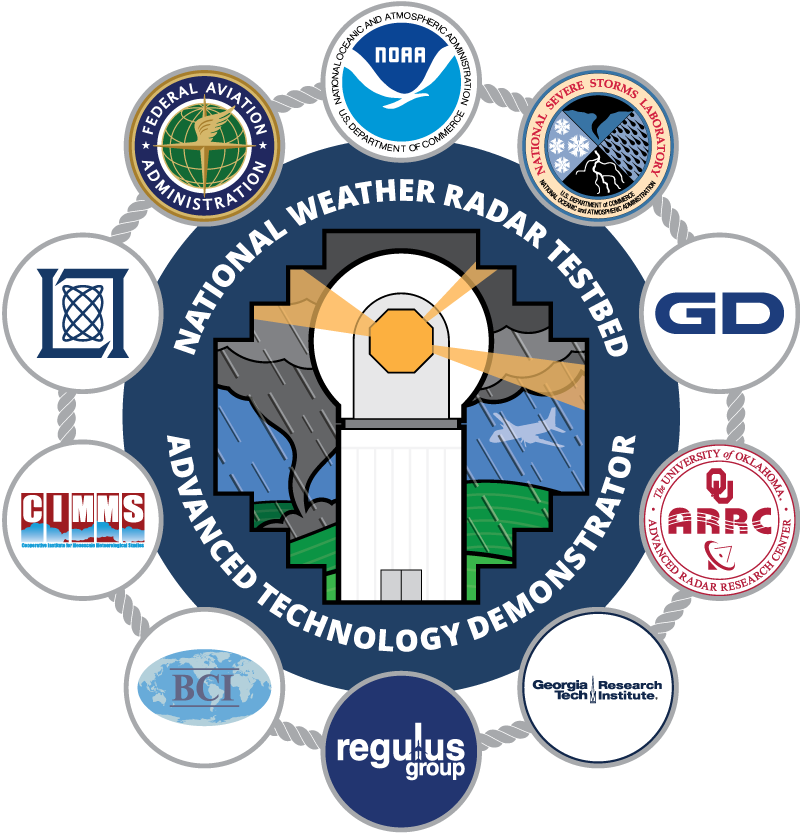Research Tools: Advanced Technology Demonstrator
Radar research at the NOAA National Severe Storms Laboratory takes another step forward. “The radar you need, when and where you need it.”
Installed at the National Weather Radar Testbed facility, the Advanced Technology Demonstrator, or ATD, is the first full-scale, S-band, dual-polarization phased array radar built from the ground up and designed specifically for use as a weather radar. Previously, from 2003 to 2016, NSSL evaluated the technology using a SPY-1A originally built for the United States Navy and repurposed for weather observations.
Research
A phased array radar is able to steer the radar beam electronically left-to-right and up-and-down while the antenna remains stationary. The ATD has a flat, or planar, antenna comprised of 76 panels with 4,864 radiating elements.
In addition, the ATD features dual polarization technology developed at NSSL and recently added to WSR-88D radars, also known as NEXRAD, throughout the country. The ATD is adding dual polarization technology to phased array technology, combining the benefits of both. The new radar will feature dual-polarization’s ability to show the size and shape of precipitation, and the phased array’s faster updates.
The radar will be used for meteorological studies and to help researchers evaluate polarimetric performance of a planar phased array radar.
Faster updates have been shown to improve warning lead time and accuracy in testbed studies with NOAA National Weather Service forecasters. The ATD will help researchers answer questions about the dual-polarization performance of planar phased array radars and address critical issues of calibration. These answers, along with studies of utility and data quality, may ultimately determine whether a phased array radar can provide weather data that meets the needs of the National Weather Service.
The NWRT/ATD has unique capabilities to perform the polarimetric evaluation. A calibration tower will be installed to enable researchers to both receive signals from and transmit signals to the radar. The ATD will rotate to allow researchers to collect calibration measurements at all electronic steering angles. The ATD can also be pointed vertically, which will allow additional calibration evaluation techniques to be tested.
Partners
This NOAA and FAA jointly funded project cost $38 million over five years. The ATD design activities began in 2014 and the major components were installed in the NWRT facility in July 2018. The system will available for research in early 2019.
Multiple research partners collaborated in the development of the ATD, including NOAA’s National Severe Storms Laboratory, the University of Oklahoma Cooperative Institute for Mesoscale Meteorological Studies, Massachusetts Institute of Technology Lincoln Laboratory, General Dynamics, Basic Commerce & Industries, Inc, Georgia Tech Research Institute, Ball Aerospace, the University of Oklahoma Advanced Radar Research Center, and the Regulus Group.


